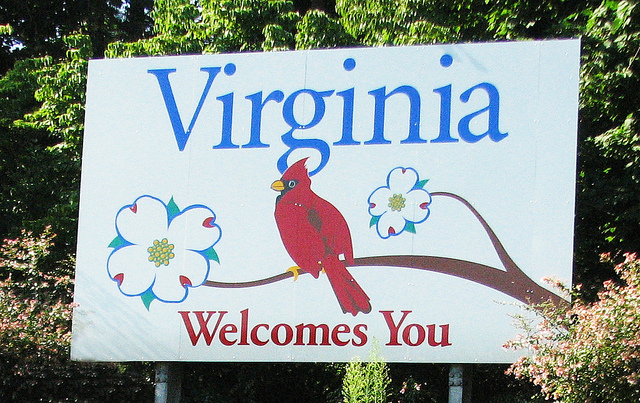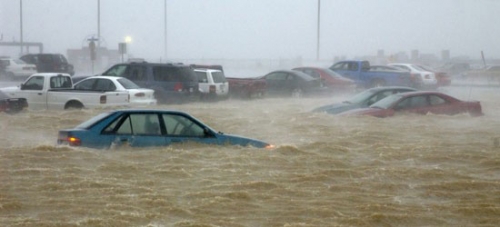A Washington Post editorial yesterday called out a new bill in the Virginia state legislature as “the smart way” to go about cutting carbon emissions. Here are three reasons why it’s easy to agree with that take on what my home state might do.

(Credit: Colin Grey, www.cgpgrey.com)
The Virginia Coastal Protection Act, sponsored by Del. Ronald Villanueva, a Republican from Virginia Beach, focuses heavily on the impacts of increased flooding in Virginia, particularly in the Tidewater area, and what can be done about them—what resources these communities need to protect themselves from current impacts and prepare for more risk.
Tidal flooding, brought on in that area by both sinking land and sea level rise, is serious, and one of several impacts that Virginia is facing and that Virginia communities are struggling to cope with.
But adaptation to sea level rise and other impacts of climate change isn’t cheap. A recent report shows it could cost over $1 billion to prepare just the city of Norfolk.
That’s why this bill is so smart. Under the Clean Power Plan, states will need to find ways to cut their carbon emissions. And, as the Post editorial points out, there’s a lot of flexibility in how they do that. They can, for example, take an “efficient, market-based approach that would cost less money, require less hassle and raise revenue for the state.”
And that, they say, is just what Del. Villanueva’s bill would do, with a particular focus on coastal protection. It would bring Virginia into the Regional Greenhouse Gas Initiative (RGGI), add a strong Virginia twist, and help the state embrace a better energy future.
Building on success
Under RGGI, nine Mid-Atlantic and Northeast states have garnered a boatload of know-how since 2008 about addressing power sector carbon emissions efficiently and cost-effectively. RGGI is a proven success, one Virginia would be able to draw on.
The bill would have the state auction off 100% of emission permits, as many of the existing RGGI states do, with the proceeds going to a new “Commonwealth Resilience Fund.” That approach captures the value—potentially some $200 million a year—for the people of Virginia, rather than handing windfall profits to power plant owners.
Virginia twist

A parking lot flooding in Norfolk, Virginia. Photo: Michael Pendergass / US Navy, Via Climate Central
Unlike in current RGGI states, the Virginia Coastal Protection Act would focus on coastal resilience. The bill proposes that the primary use of funds—half or more—be invested in protecting the state’s coast from the ravages of rising seas and sinking land:
“to assist cities, localities, and municipalities in Hampton Roads and the coastal region of the Commonwealth… with sea level rise and recurrent flooding adaptation and resilience efforts”
And that part of Virginia certainly fits the bill. Investments in building floodwalls, raising roads, and improving storm-water management, for example, could be money well spent.
By bringing Virginia into RGGI, the Virginia Coastal Protection Act would attack the problem from both ends: investing to cut the carbon emissions that fuel climate change, and investing to deal with the challenges we know will come in the meantime.
Embracing the clean energy transition
Virginia has a lot of promise when it comes to clean energy, and this bill would also be a big boost in the clean energy direction.
On solar, for example, Virginia is in the bottom half of states when it comes to getting solar installed. But the state has appreciably more sun than nation-leading solar states like New Jersey and Massachusetts do.
The Virginia Coastal Protection Act would allocate five percent for investments in renewable energy, and fully 30 percent of the revenue to energy efficiency and conservation, with at least half going to programs for low- and moderate-income households.
The bill would also set aside money to invest in helping its people make the transition to a clean energy future. Virginia has a long history in the energy field, and this bill acknowledges by allocating a solid portion of the revenues to
“…provide economic development, education, and workforce training programs for families and businesses in Southwest Virginia for the purpose of revitalizing communities negatively impacted by the decline of fossil fuel production.”
Virginia is for leaders
Virginia is already making some positive steps toward addressing climate change and preparing for the Clean Power Plan.
As a good next step toward cutting carbon emissions, investing in protecting coastal communities, and expanding clean energy, the Virginia Coastal Protection Act is a great move for the commonwealth. It’s a smart way to go.
